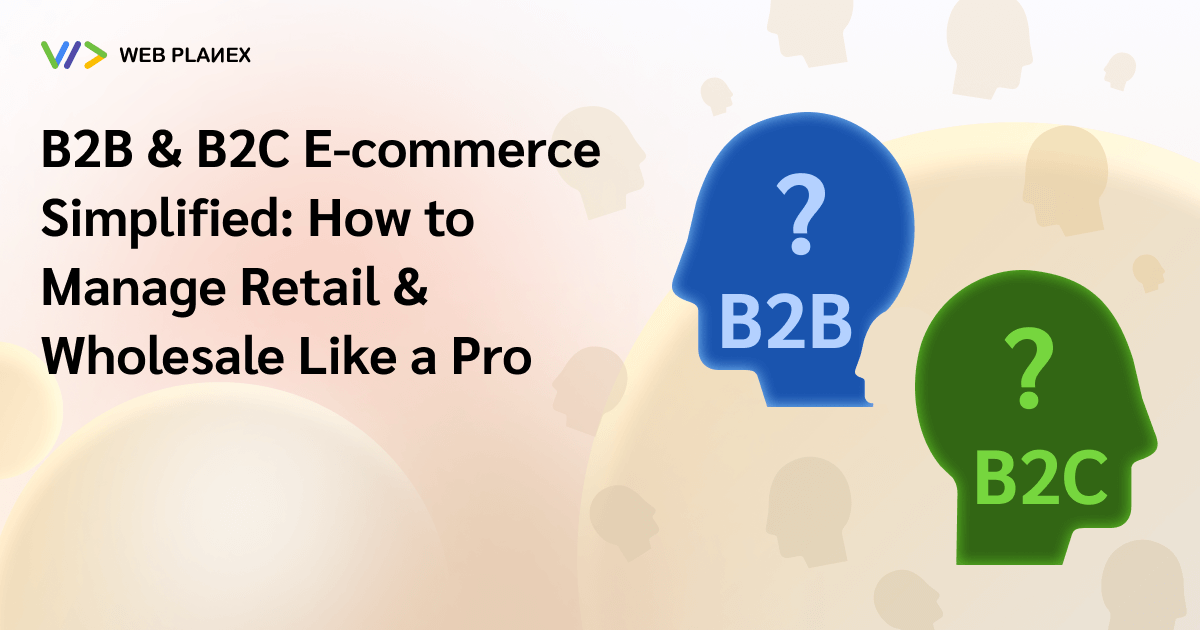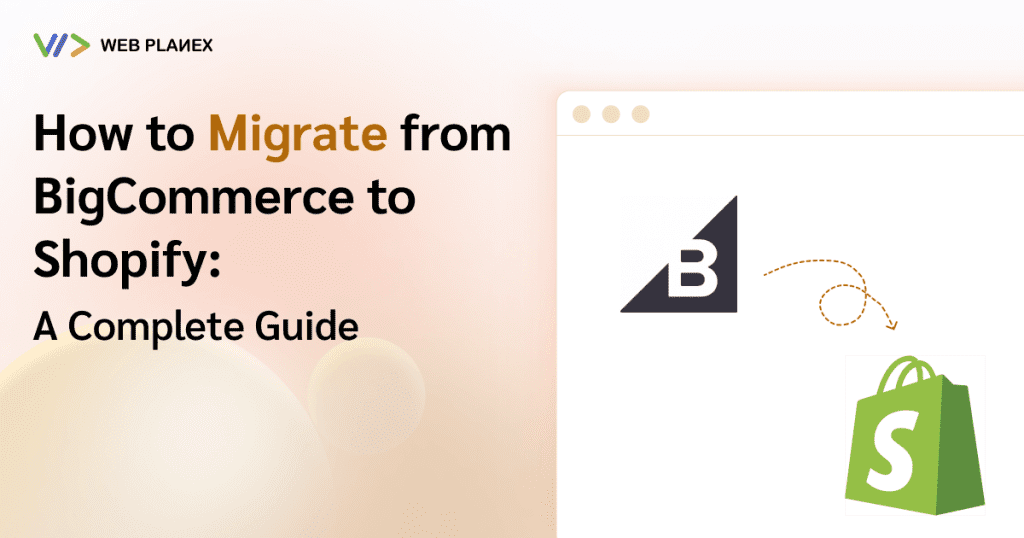
Introduction
E-commerce has changed how business operates these days, serving both business-to-business (B2B) and business-to-consumer (B2C) markets. Both involve selling products and services, and while both hold the same purpose, their approach, customer expectations, and operations are very different. Mastering B2B and B2C by learning effective strategies is very important for businesses wanting to level up, increase their revenue, and optimize their strategies. In this blog, let’s explore the difference between B2B and B2C e-commerce, talk about effective strategies, ways to master B2B and B2C e-commerce, and practices for managing them successfully.
Understanding the B2B and B2C e-commerce
Before looking into the strategies, let’s try to understand the difference between B2B and B2C e-commerce models.
B2B e-commerce: B2B e-commerce involves transactions between multiple businesses, where one business sells products or services to another business. These transactions are usually in a large order, and the prices are negotiated. Common B2B businesses are the manufacturers and the distributors that focus on large orders and bulk pricing, they can have customized pricing and contract-based sales while holding longer sales cycles and long-term business relationships.
B2C e-commerce: B2C e-commerce involves direct selling to consumers through different online platforms like Amazon, Flipkart, eBay, etc. The B2C e-commerce model includes putting focus on speed, convenience, and user experience to have more conversions and promotions. B2C businesses often focus on providing a smooth, user-friendly experience. Some examples of B2C businesses are Amazon, fashion brands like Adidas and Nike, and electronic retailers. The focus is majorly on branding and customer experience, and unlike B2B e-commerce, sales have a shorter cycle (often impulsive) and no negotiations.
Challenges in managing B2B and B2C e-commerce
Managing B2B and B2C e-commerce comes with a million challenges and issues, Challenges can differ based on several factors like the complexity of the order, customer expectations, pricing, sales, marketing, etc.
Managing Inventory and Supply Chain
The challenge in managing inventory and supply chain is balancing stock levels between B2B and B2C. B2B orders are generally large and require bulk inventory, whereas B2C orders are small but more frequent. The problem with over-ordering is that it can lead to excess ordering and vice versa; under-ordering can cause stockouts. To solve this problem, businesses can implement an inventory management system(IMS) to track real-time stock levels or optimize warehouse management.
Customer Expectations
B2B and B2C have different customer expectations. B2B customers have specific needs and expect personalized service, negotiations, customized products, etc. B2B users look for long-term relationships, as they are likely to be complex and have long sales cycles. Similarly, B2C customers need quick and smooth transactions with fixed pricing. They focus on a fast, user-friendly shopping experience, personalized product recommendations, quick shipping, and easy returns. B2C sales cycles are much shorter. Businesses can use AI-driven personalization to upscale customer experience.
Different Pricing and Discount Strategies
B2B e-commerce pricing is very flexible, and negotiations are done depending on how large the order is the relationship with the client, and contract agreements. B2B also has custom pricing models, discounts, etc. In B2C, e-commerce pricing is generally fixed, and no negotiations are done, but there are always promotions, and sales are very common. Businesses can use e-commerce platforms that allow dynamic prices and custom quotes for B2B customers and use strategies that adjust prices based on the demand for products and the target audience.
Order Fulfillment and Logistics
For B2B, large orders require custom packaging, shipping, etc, while B2C orders demand fast delivery, tracking, and easy returns. Managing both can be very complex. Businesses can implement multi-channel order management systems to make the whole process easy and seamless while also partnering with third-party logistics for better B2B and B2C shipping.
Marketing and Customer Acquisition
B2B business marketing requires relationship-building, LinkedIn networking, content marketing, and SEO, while B2C marketing requires social media, influencer partnerships, and email campaigns. Finding the right balance for these two is complex sometimes. Businesses should have separate marketing campaigns for B2B and B2C audiences; they can also use account-based marketing for B2B clients and paid ads and social media for B2C customers while investing in SEO and content marketing to attract more customers.
Technology and Integration
Both B2B and B2C require different systems, but integrating them into one platform can be very complex. B2B business needs specialized systems to manage complex transactions and accounts, have custom pricing, and bulk orders. Systems like “ERP” and “CRM” are used in B2B businesses to make the complex process easy. B2C e-commerce platforms are simpler, focusing on customer-facing features like product pages and checkout processes.
Data Security and Privacy
B2B customers usually share sensitive business information that might be confidential, meaning that security measures should be very strong and need strict compliance with the privacy of data. B2C businesses also protect sensitive customer information like payment information and other personal details. Securing sensitive data for both B2B and B2C requires high-security measures. Failure to secure sensitive data can damage trust and lead to legal backlash.
Strategies for Managing Retail(B2C) and Wholesale (B2B) E-commerce
Managing both B2B and B2C, i.e., Retail and wholesale e-commerce, needs different strategies for smooth operations and seamless customer experience. Both B2B and B2C e-commerce models have different customer expectations, pricing structures, operational needs, etc. Some of the important strategies for successful management are listed below:
Choosing the right e-commerce platform
Using a flexible and efficient e-commerce platform is important for the management of both B2B and B2C. An ideal platform should support multiple pricing structures, bulk order capabilities, and integration with ERP and CRM systems for smooth operations. Some of the most famous and scalable platforms are Shopify Plus, Magento, Bigcommerce, etc.
Flexible Pricing Models
Between a B2B and B2C business, one of the most common differences is the pricing; managing both B2B and B2C needs dynamic pricing. For B2B businesses, they provide dynamic pricing and custom quotes. B2B customers expect negotiations based on bulk orders and long-term relationships. For B2C businesses, pricing is generally fixed, transparent, and straightforward. Discounts and sales work very well in the B2B market.
Optimizing the user experience
B2B and B2C customers have very different expectations when shopping through an e-commerce platform. B2C customers prioritize easy shipping, quick delivery, etc. B2B buyers require account management, bulk ordering, and detailed product information. For the optimization of B2C businesses, one can use a fast-loading website with easy-to-use navigation, mobile-friendly design, personalized recommendations, and multiple payment options. For B2B businesses, use account-based portals with bulk order management and personalized product listings, request a quote, and have multi-user accounts for businesses with different buyers.
Offer flexible payment options
B2B customers prefer invoicing, purchase orders, etc, while B2C customers prefer instant payments with digital wallets and credit/debit cards. Businesses can offer to buy now and pay later, allow wire payments, and automate invoicing with QuickBooks, Xero, or Freshbooks.
Practices for scaling both B2B and B2C e-commerce
Enhance customer support and retention strategies
Businesses can use AI chatbots and self-service techniques for easy customer support, offer personal account managers for high-value customers, set up loyalty programs for customer retention, collect customer feedback to enhance services
Data-driven marketing strategy
Using Google ads, Facebook ads, and Instagram marketing for brand awareness, businesses can also optimize SEO and content marketing to have organic traffic. another way is to have email marketing campaigns with offers and discounts. For B2B marketing, businesses can focus on LinkedIn networking and account-based marketing, publish case studies, resorts to build brand credibility, use email to reach and lead nurturing campaigns and attend shows and summits for lead generation.
Personalize the customer experience
B2B customers accept tailored recommendations, while B2B buyers prefer customized catalogs and prices. Some of the tactics for B2B are offering custom pricing, bulk orders, creating account portals, and allowing clients to request quotes for large purchases. B2C businesses should use AI-driven recommendations, offer personalized email campaigns, use dynamic pricing, etc.
Final thought
Managing both B2B and B2C e-commerce is a challenge that needs a constant strategic, data-driven, and customer-focused approach. While B2B and B2C have the same goal but different approaches, balancing both models with the right techniques can help you achieve new growth. In this blog, we would suggest you take a few key points like choosing a scalable e-commerce platform, automation of inventory and order management, optimizing and pricing strategies, improving customer experience, and using strategic approaches above all. By using automation, personalization, and multi-channel strategies, you can scale your business. In case you need Guidance and help with your e-commerce business (both B2B and B2C), getting help from an experienced firm is always a good idea for low risk and more revenue generation.
WebPlanex is an expert when it comes to e-commerce. Contact us for more information and get ready to upscale your business.




